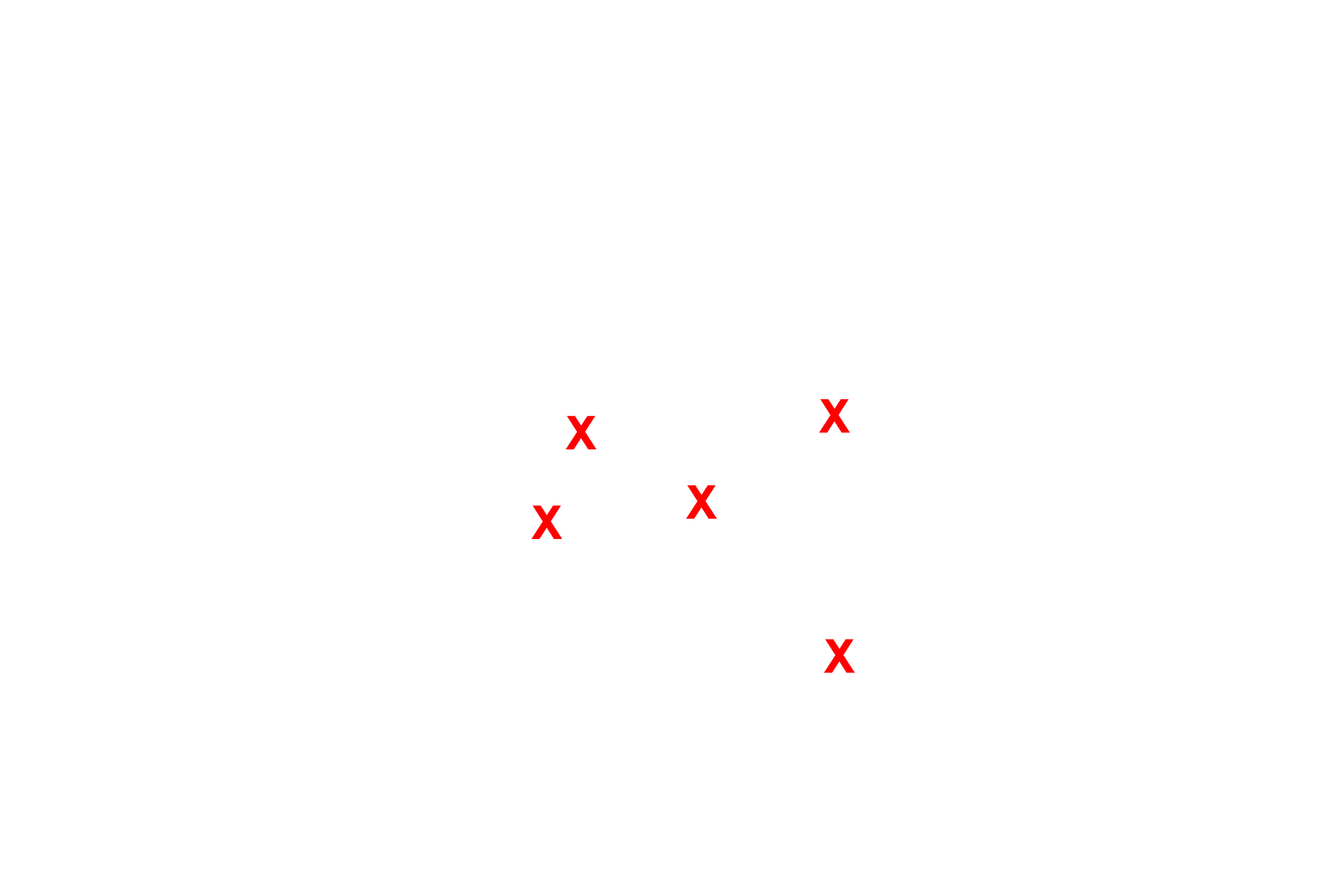
Lymph node
A lymph node is an encapsulated, bean-shaped organ usually located in groups or clusters along lymph vessels. The node, composed of a cortex and medulla, possesses a series of sinuses that filter lymph. Cells of lymph nodes phagocytose particulate matter and initiate an immune response against foreign material and microbes transported in the lymph.

Capsule >
A lymph node is surrounded by a dense connective tissue capsule that sends short, supportive trabeculae into the node. Reticular connective tissue provides the stroma for the interior of the lymph node. The hilum is the indentation in the lymph node where arterial blood enters the node and venous blood and efferent lymph vessels exit.

Trabeculae
A lymph node is surrounded by a dense connective tissue capsule that sends short, supportive trabeculae into the node. Reticular connective tissue provides the stroma for the interior of the lymph node. The hilum is the indentation in the lymph node where arterial blood enters the node and venous blood and efferent lymph vessels exit.

Hilum
A lymph node is surrounded by a dense connective tissue capsule that sends short, supportive trabeculae into the node. Reticular connective tissue provides the stroma for the interior of the lymph node. The hilum is the indentation in the lymph node where arterial blood enters the node and venous blood and efferent lymph vessels exit.

Cortex >
The cortex of a lymph node is composed of two subdivisions, outer cortex and deep cortex.

- Outer cortex >
The outer cortex (superficial cortex, nodular cortex) is filled with lymphoid nodules that are populated mostly by B lymphocytes. The inner paracortex (deep cortex) (dashed, black ovals) resembles diffuse lymphoid tissue and is populated mostly by T lymphocytes.

- Deep cortex
The outer cortex (superficial cortex, nodular cortex) is filled with lymphoid nodules that are populated mostly by B lymphocytes. The inner paracortex (deep cortex) (dashed, black ovals) resembles diffuse lymphoid tissue and is populated mostly by T lymphocytes.

Medulla >
The medulla consists of a series of medullary cords (B-dependent areas), that are finger-like projections of lymphoid tissue, and large channels, called medullary sinuses, that receive lymph from the cortical sinuses.

- Medullary cords
The medulla consists of a series of medullary cords (B-dependent areas), that are finger-like projections of lymphoid tissue, and large channels, called medullary sinuses, that receive lymph from the cortical sinuses.

- Medullary sinuses
The medulla consists of a series of medullary cords (B-dependent areas), that are finger-like projections of lymphoid tissue, and large channels, called medullary sinuses that receive lymph from the cortical sinuses.

Afferent lymphatics >
Afferent lymphatics enter from the convex surface, penetrate the capsule and enter the subcapsular sinus. From this sinus lymph and lymph-borne immune cells percolate through trabecular sinuses lying adjacent to trabeculae and enter medullary sinuses. Medullary sinuses drain into efferent lymphatics that exit at the hilum. Sinuses filter lymph and respond to the foreign materials it contains.

Subcapsular sinus
Afferent lymphatics enter from the convex surface, penetrate the capsule and enter the subcapsular sinus. From this sinus lymph and lymph-borne immune cells percolate through trabecular sinuses lying adjacent to trabeculae and enter medullary sinuses. Medullary sinuses drain into efferent lymphatics that exit at the hilum. Sinuses filter lymph and respond to the foreign materials it contains.

Trabecular sinuses
Afferent lymphatics enter from the convex surface, penetrate the capsule and enter the subcapsular sinus. From this sinus lymph and lymph-borne immune cells percolate through trabecular sinuses lying adjacent to trabeculae and enter medullary sinuses. Medullary sinuses drain into efferent lymphatics that exit at the hilum. Sinuses filter lymph and respond to foreign materials it contains.

Efferent lymphatic
Afferent lymphatics enter from the convex surface, penetrate the capsule and enter the subcapsular sinus. From this sinus lymph and lymph-borne immune cells percolate through trabecular sinuses lying adjacent to trabeculae and enter medullary sinuses. Medullary sinuses drain into efferent lymphatics that exit at the hilum. Sinuses filter lymph and respond to foreign materials it contains.

Blood supply >
Arterioles (green arrows), supplying blood, enter the cortex and divide into capillary plexuses (yellow arrows) in the outer cortex. Many of the post-capillary venules draining these capillaries, particularly in the paracortex, are high-endothelial venules, allowing lymphocytes to pass from the blood into the parenchyma of the node. Venules (blue arrows) exit at the hilum.